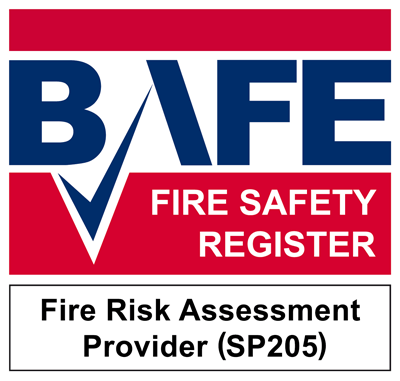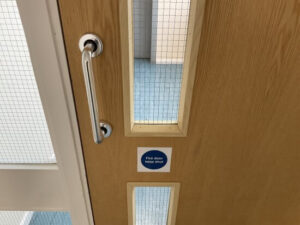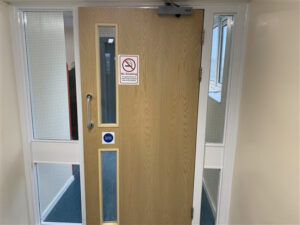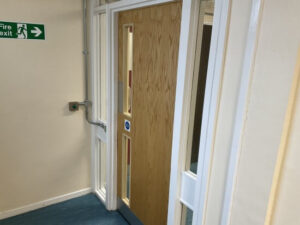Ensure the Safety of Your Building with Our Comprehensive Fire Door Surveys
Trusted by building owners and managers nationwide, DDS International is your go-to source for reliable and thorough fire door inspections.
Fire doors are a crucial component of the fire safety of any building. They are designed to prevent the spread of fire and smoke, protecting the occupants of a building and allowing them to evacuate safely in the event of a fire. However, it is essential that fire doors are properly maintained and inspected to ensure that they are in good working order and compliant with relevant fire safety regulations.
If you are responsible for the fire safety of a commercial or public building, you may be wondering how to ensure that your fire doors are properly maintained and inspected. That’s where DDS International comes in.
At DDS International, we offer fire door surveys to help building owners and managers ensure the safety of their buildings. Our team of experienced and qualified inspectors use the latest tools and techniques to conduct thorough inspections of your fire doors, identify any issues or deficiencies, and provide recommendations for repairs or improvements.
DDS has developed a Fire Door Survey system on the PYRAMID™ System that allows our assessors to carry out a full 42-point check, resulting in a comprehensive report.


Contents [show]
What is a Fire Door Survey?
A fire door survey is an inspection of the fire doors in a building, conducted by a qualified inspector. The purpose of the survey is to ensure that the fire doors are in good working order and compliant with relevant fire safety regulations.
 During a fire door survey, the inspector will conduct a variety of tests and inspections to assess the condition and performance of the fire doors. This may include operational testing, where the inspector will check that the door opens and closes smoothly and that the latch and hinges are functioning properly. The inspector will also conduct a visual inspection of the door, checking for any visible damage or defects such as warping, cracks, or loose hardware.
During a fire door survey, the inspector will conduct a variety of tests and inspections to assess the condition and performance of the fire doors. This may include operational testing, where the inspector will check that the door opens and closes smoothly and that the latch and hinges are functioning properly. The inspector will also conduct a visual inspection of the door, checking for any visible damage or defects such as warping, cracks, or loose hardware.
In addition to these specific inspections, the inspector may also review the overall fire safety measures in the building, including the fire alarm system and emergency exits. The fire door survey may be part of a larger fire risk assessment, which is a comprehensive evaluation of the fire safety measures in a building.
Why are Fire Door Surveys Important?
Fire doors are an essential component of passive fire protection, which is the use of building elements and systems to prevent the spread of fire. In order to effectively contain a fire and protect the occupants of a building, it is crucial that fire doors are properly installed, maintained, and tested.
In the UK, the Regulatory Reform (Fire Safety) Order 2005 requires that a “responsible person” must undertake a fire risk assessment for any non-domestic premises, and take appropriate measures to reduce the risk of fire. This includes ensuring that fire doors are properly maintained and fit for purpose.
Failure to comply with fire safety regulations can have serious consequences, including fines, loss of insurance coverage, and even criminal prosecution in cases where the lack of proper fire safety measures has resulted in injury or death. Conducting regular fire door surveys is an important step in ensuring compliance with fire safety regulations and protecting the occupants of a building.
How Often Should Fire Door Surveys be Conducted?
 The frequency of fire door surveys will depend on the specific requirements of the building and the fire safety regulations that apply. In general, it is recommended that fire doors be inspected annually to ensure that they are in good working order.
The frequency of fire door surveys will depend on the specific requirements of the building and the fire safety regulations that apply. In general, it is recommended that fire doors be inspected annually to ensure that they are in good working order.
However, some buildings may require more frequent inspections, particularly if they have a high fire risk or a large number of occupants. For example, the Fire Door Inspection Scheme (FDIS) recommends that fire doors in high occupancy buildings such as hotels, hospitals, and care homes be inspected every six months.
In addition to annual inspections, some buildings may be required to undergo a full fire door survey every five years, or following significant changes or renovations to the building. It is important for building owners and managers to be aware of the specific requirements for their building and to schedule regular fire door surveys accordingly.
Fire Doors (regulation 10)
The Fire Safety (England) Regulations 2022 will make it a legal requirement from 23 January 2023 for responsible persons for all multi-occupied residential buildings in England with storeys over 11 metres in height to:
- undertake quarterly checks of all fire doors (including self-closing devices) in the common parts
- undertake – on a best endeavour basis – annual checks of all flat entrance doors (including self-closing devices) that lead onto a building’s common parts.
Regulation 10 advises a fire door check to consider:
- if there has been any alterations or damage to a door’s glazing apertures or air transfer grille,
- if there are any gaps around the door frame and that seals and hinges are fitted correctly,
- that the door closer shuts the door,
- that the door closes correctly around the whole frame,
- that there is no visible damage (either deliberate or from wear and tear) to the door or door closer.
Where issues are identified from these checks, it might be appropriate to undertake more detailed checks of doors (or the self-closing device) if any damage is identified from the initial inspection. This could include engaging a specialist.
What to Expect During a Fire Door Survey
If you are preparing for a fire door survey, there are a few steps you can take to ensure a smooth and successful inspection. First, it is important to gather all relevant documents, such as the fire risk assessment and maintenance records for the fire doors.
During the survey, the inspector will likely ask questions about the fire doors and their maintenance history. It is also a good idea to make sure that the fire doors are easily accessible for the inspector to test and inspect.
The actual process of the fire door survey will depend on the specific requirements of the building and the scope of the inspection. However, here are some general steps to expect during a fire door survey:

- The inspector will begin by reviewing the relevant documents and asking questions about the fire doors and their maintenance history.
- The inspector will then conduct operational testing of the fire doors, checking that they open and close smoothly and that the latch and hinges are functioning properly.
- The inspector will also conduct a visual inspection of the fire doors, looking for any visible damage or defects. This may include checking the door frame, hardware, and sealant.
- The inspector may also check the fire resistance rating of the doors, which indicates how long the door can withstand the effects of a fire. This may be done using a fire resistance test or by reviewing the manufacturer’s specifications.
- The inspector may also review the overall fire safety measures in the building, including the fire alarm system and emergency exits.
- After the inspection is complete, the inspector will provide a report outlining any issues or deficiencies found during the survey. The report will also include recommendations for any necessary repairs or improvements.
Conclusion
Fire door surveys are an important part of maintaining the fire safety of a building. They help ensure that fire doors are in good working order and compliant with relevant regulations, protecting the occupants of the building in the event of a fire. Building owners and managers should prioritize fire door maintenance and schedule regular inspections to ensure the safety of their buildings.

Comments are closed.